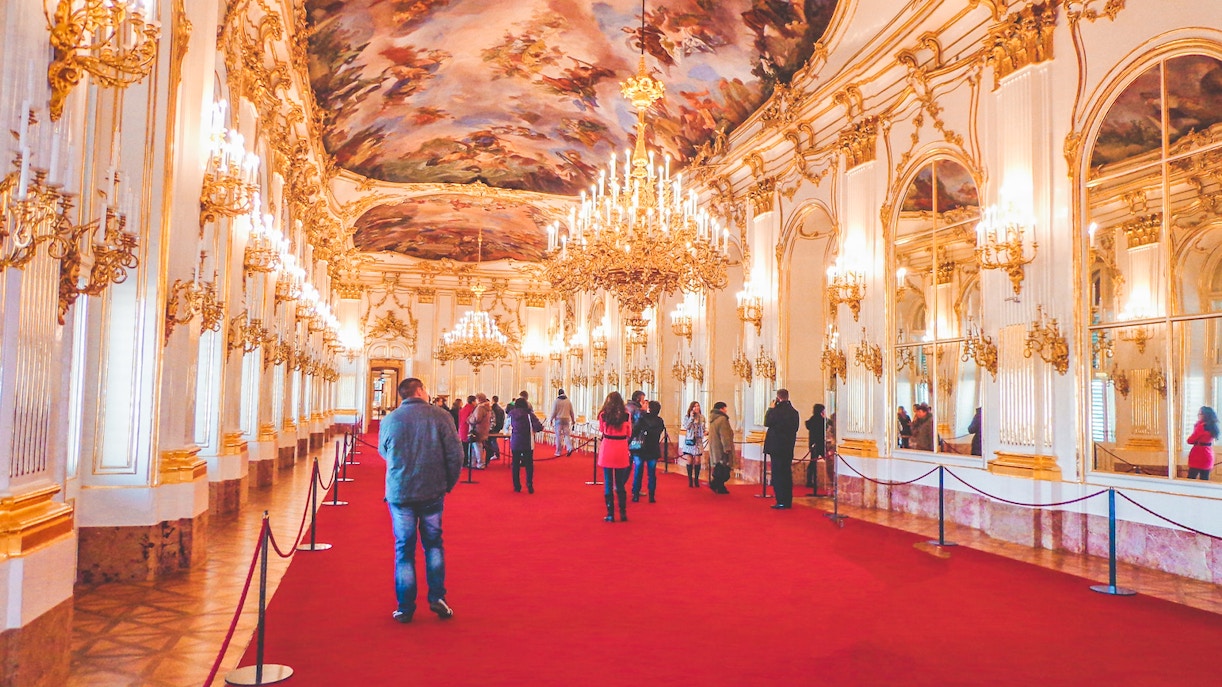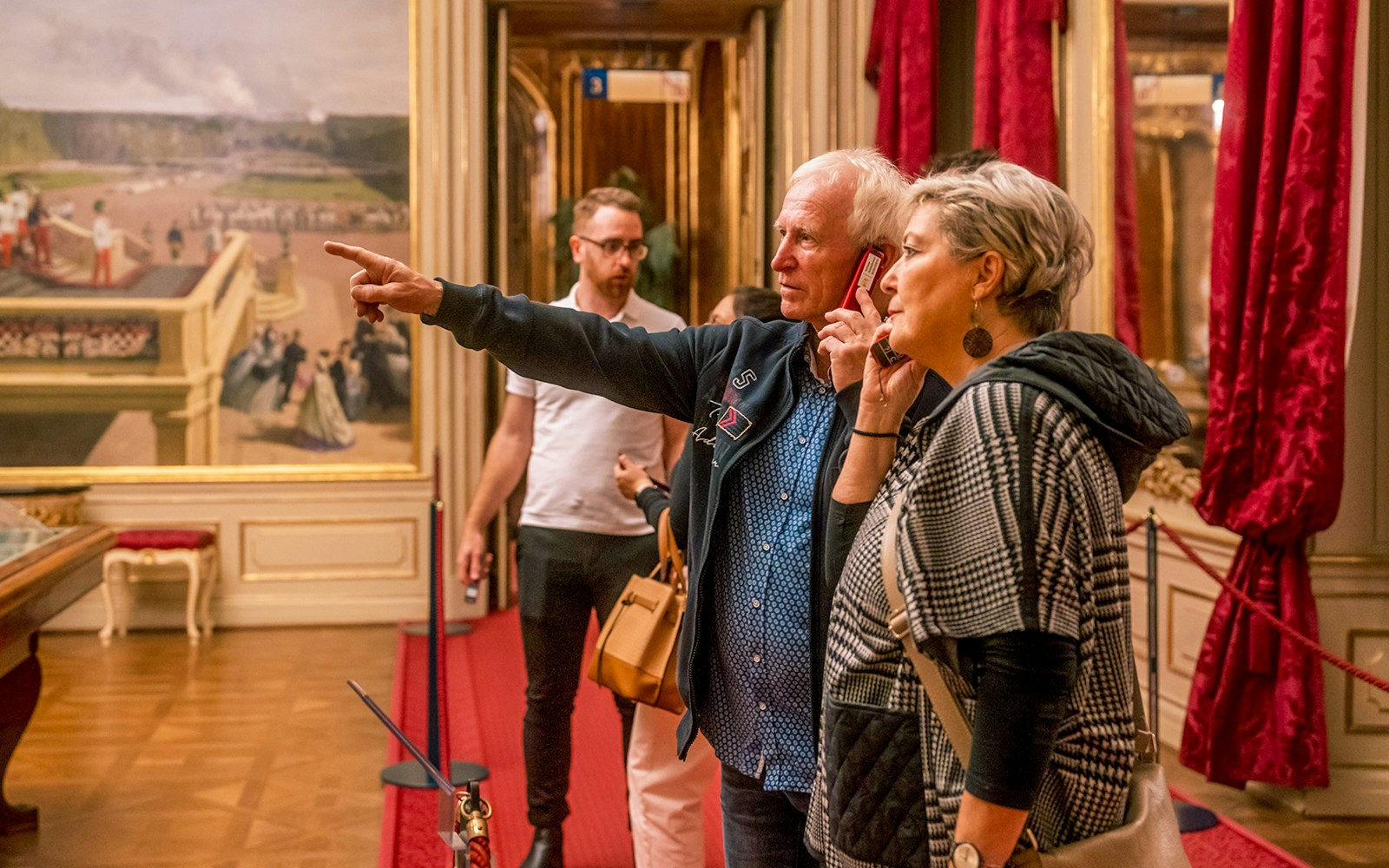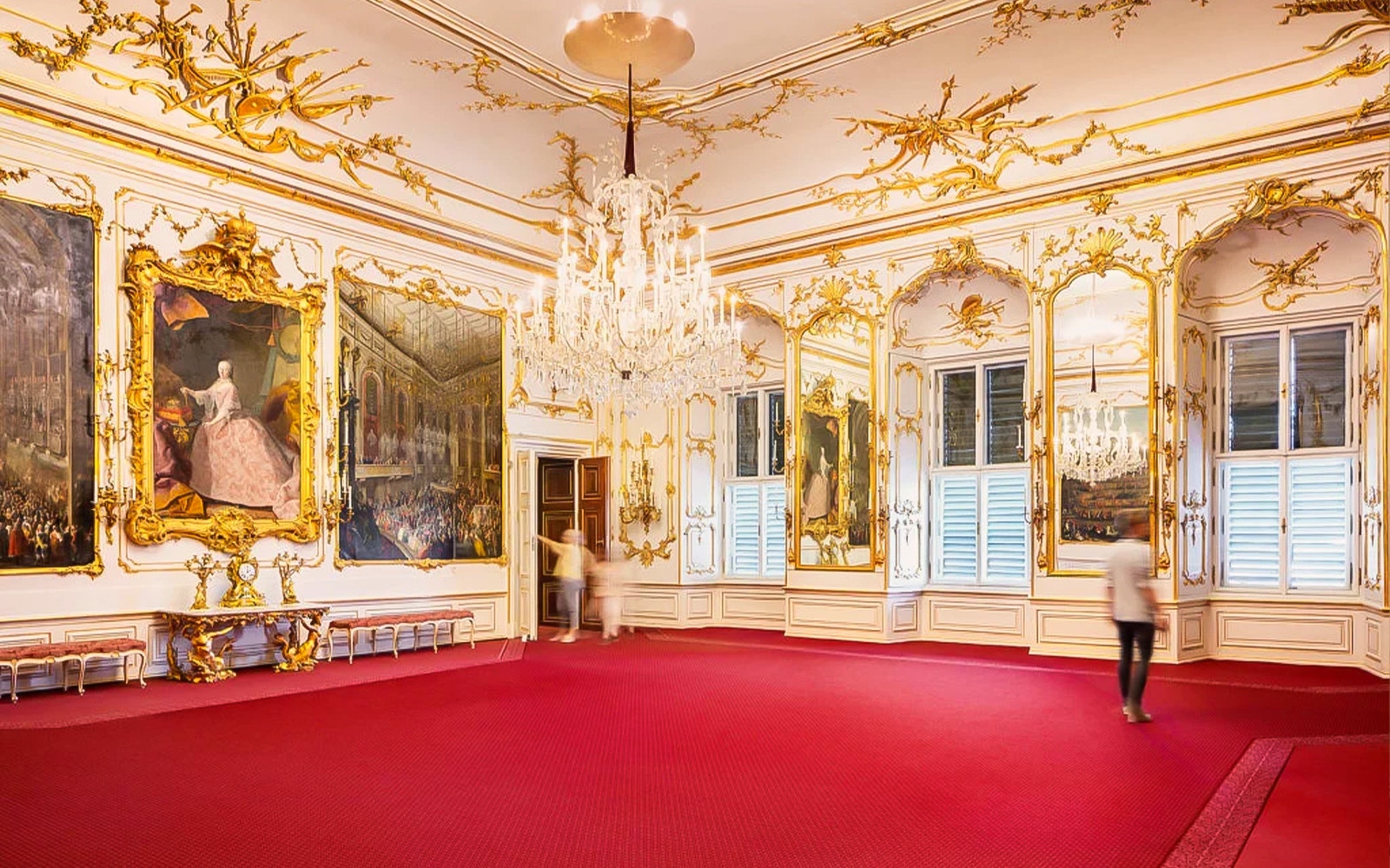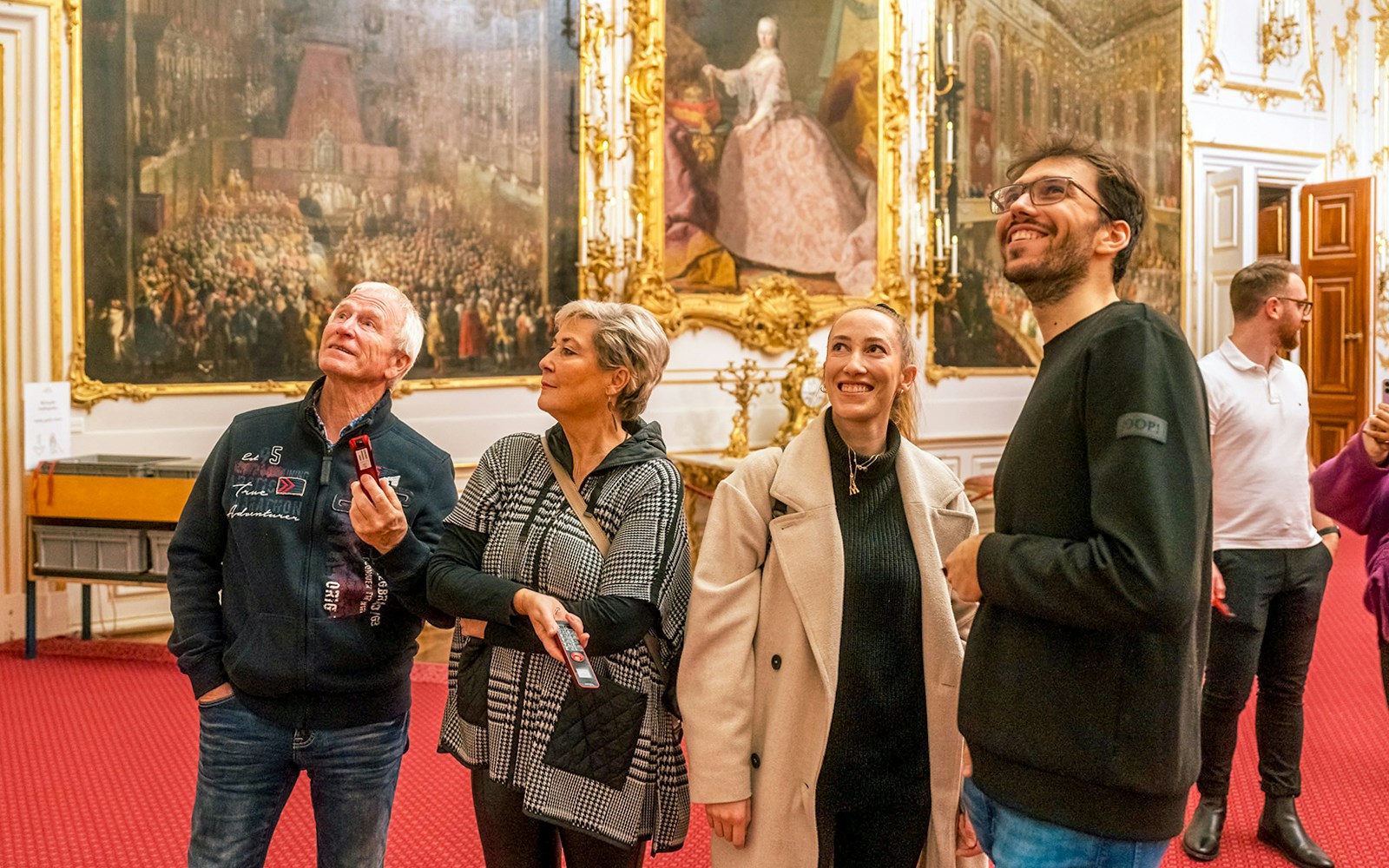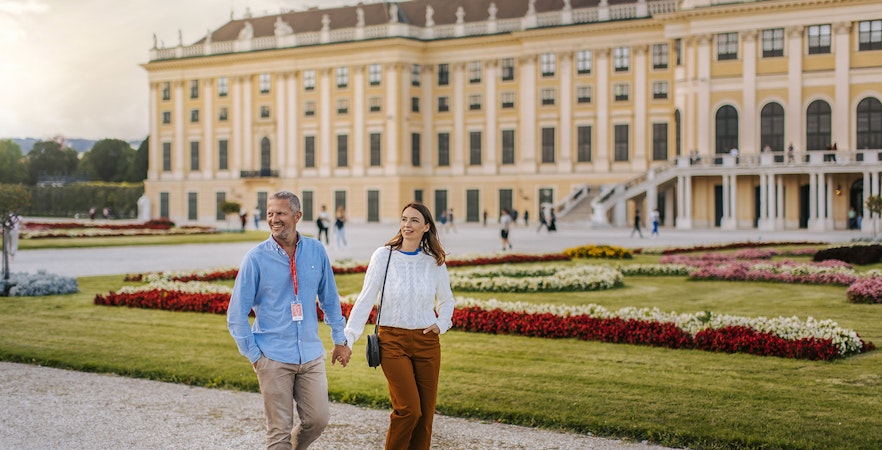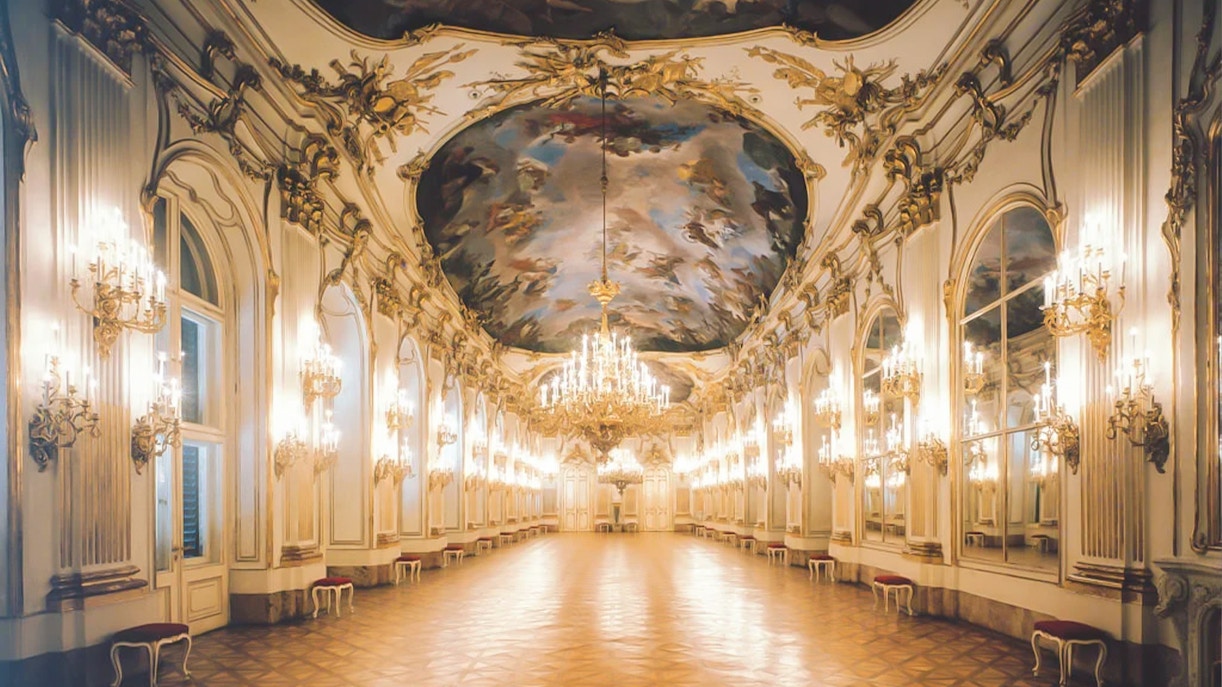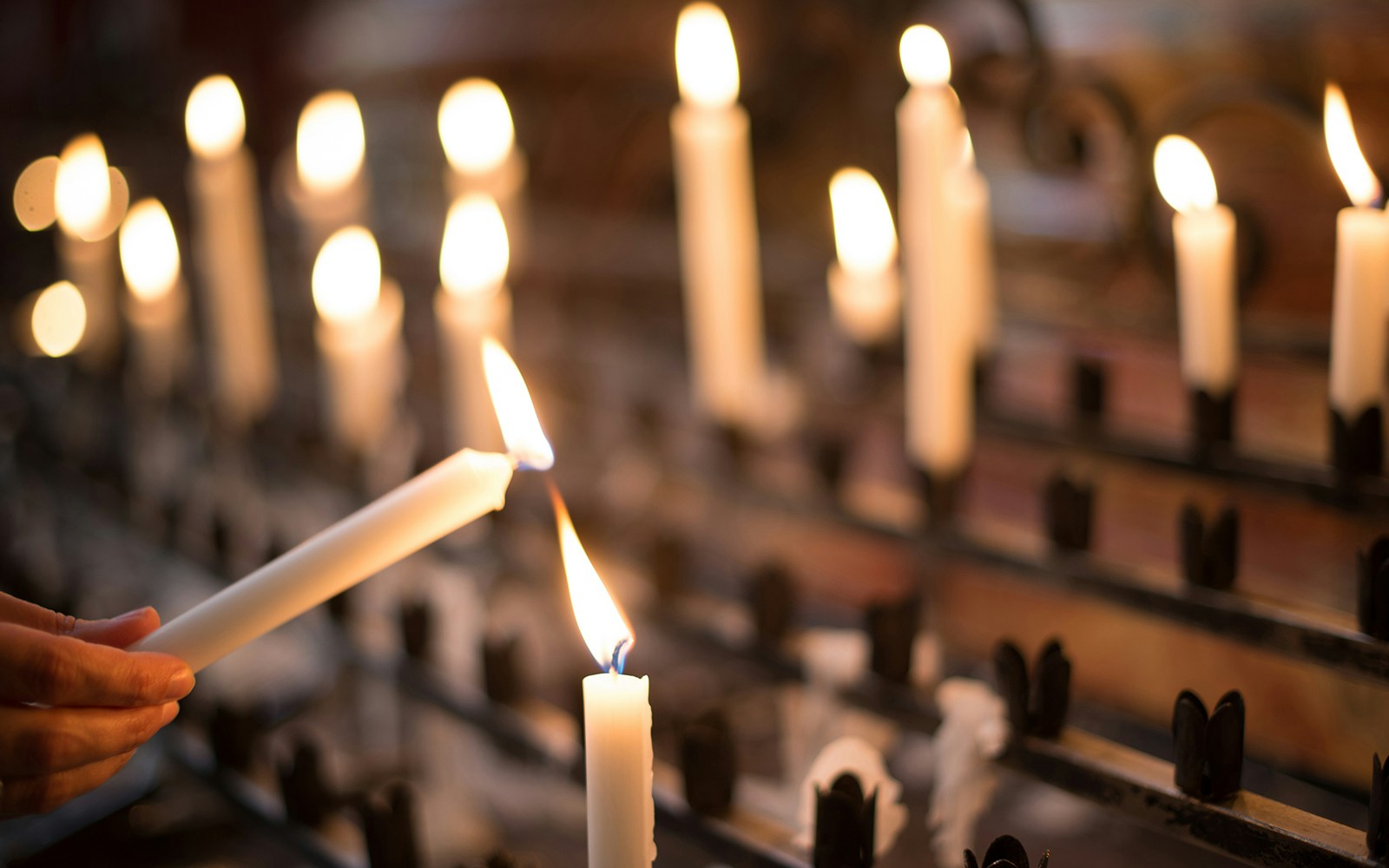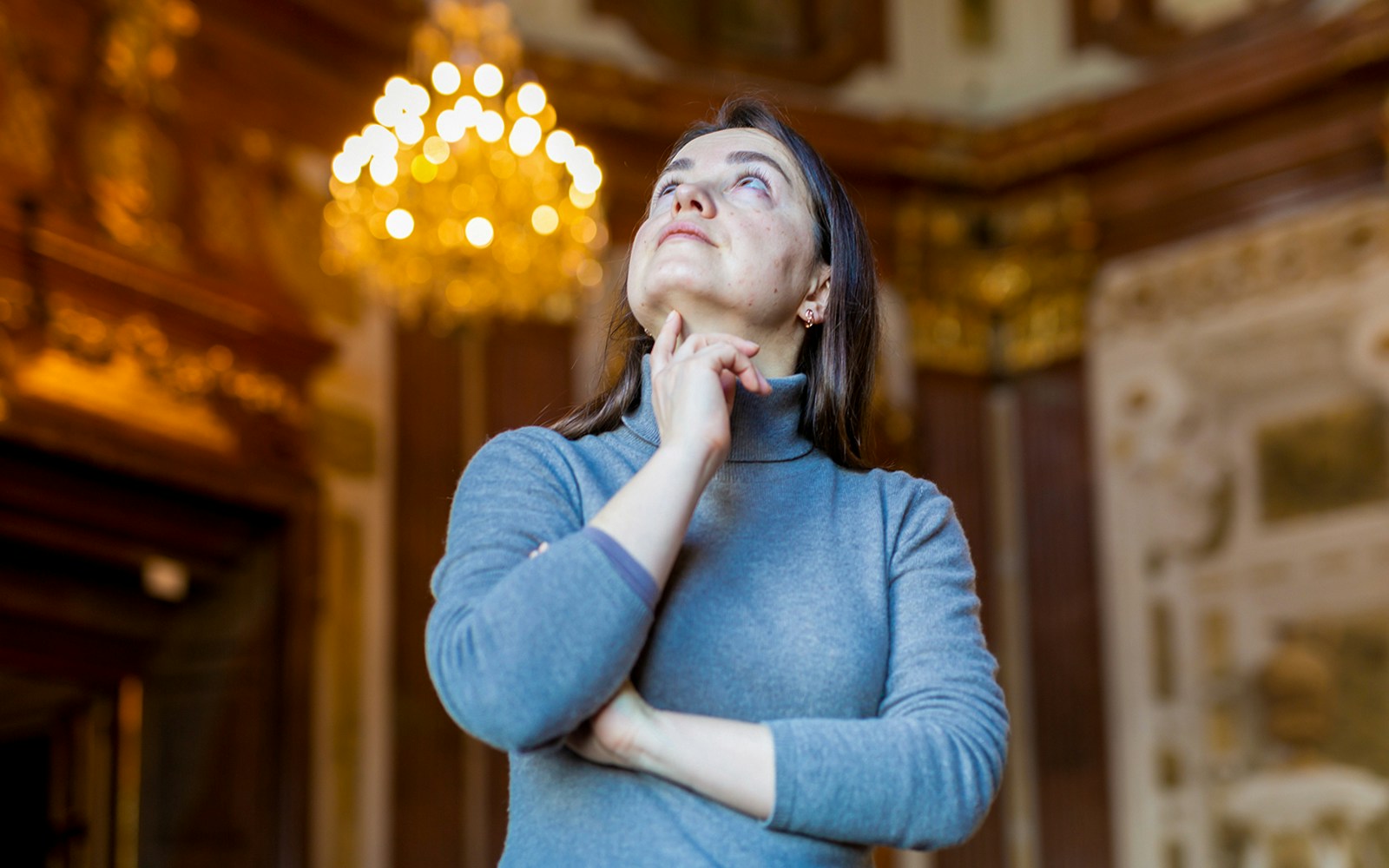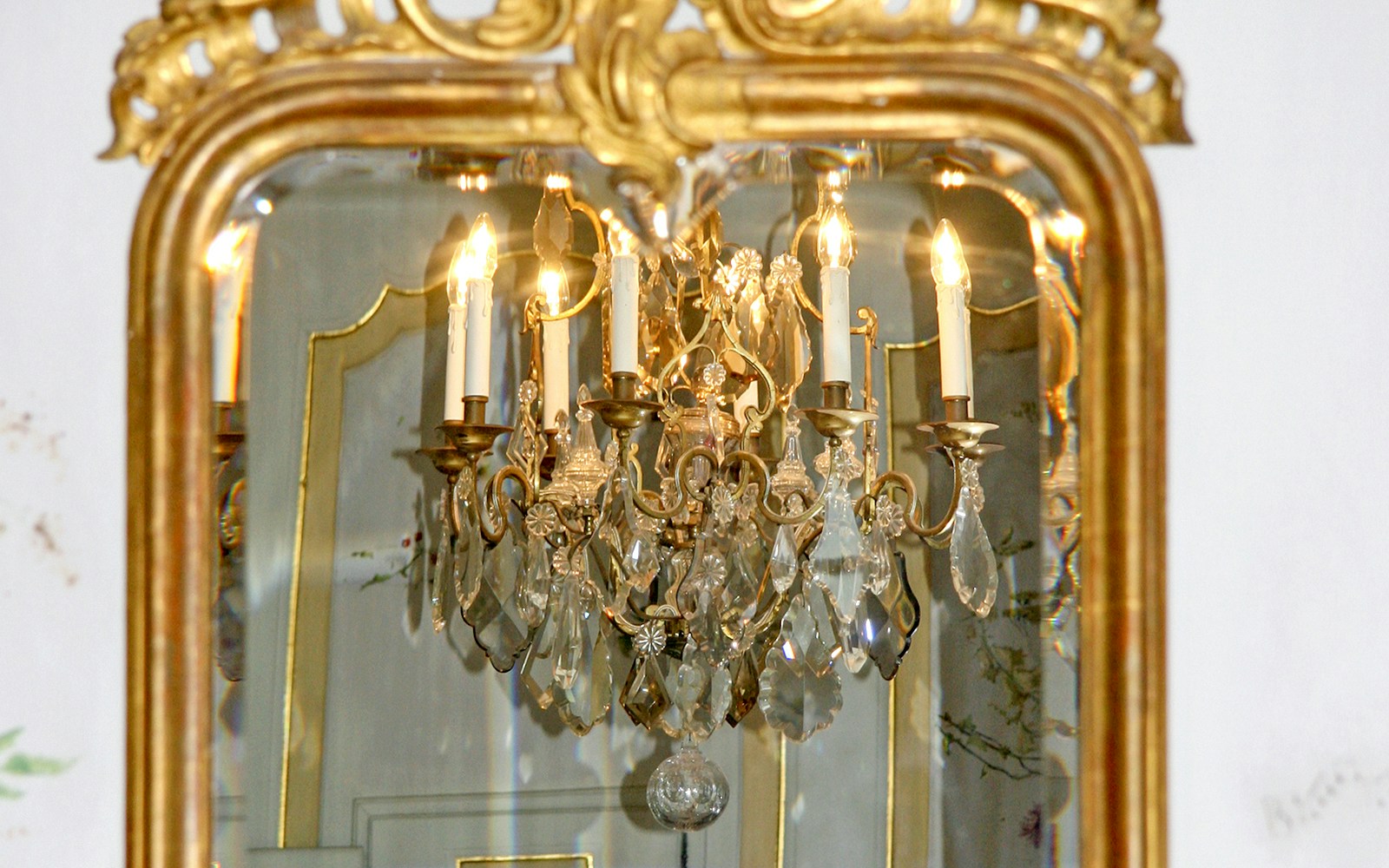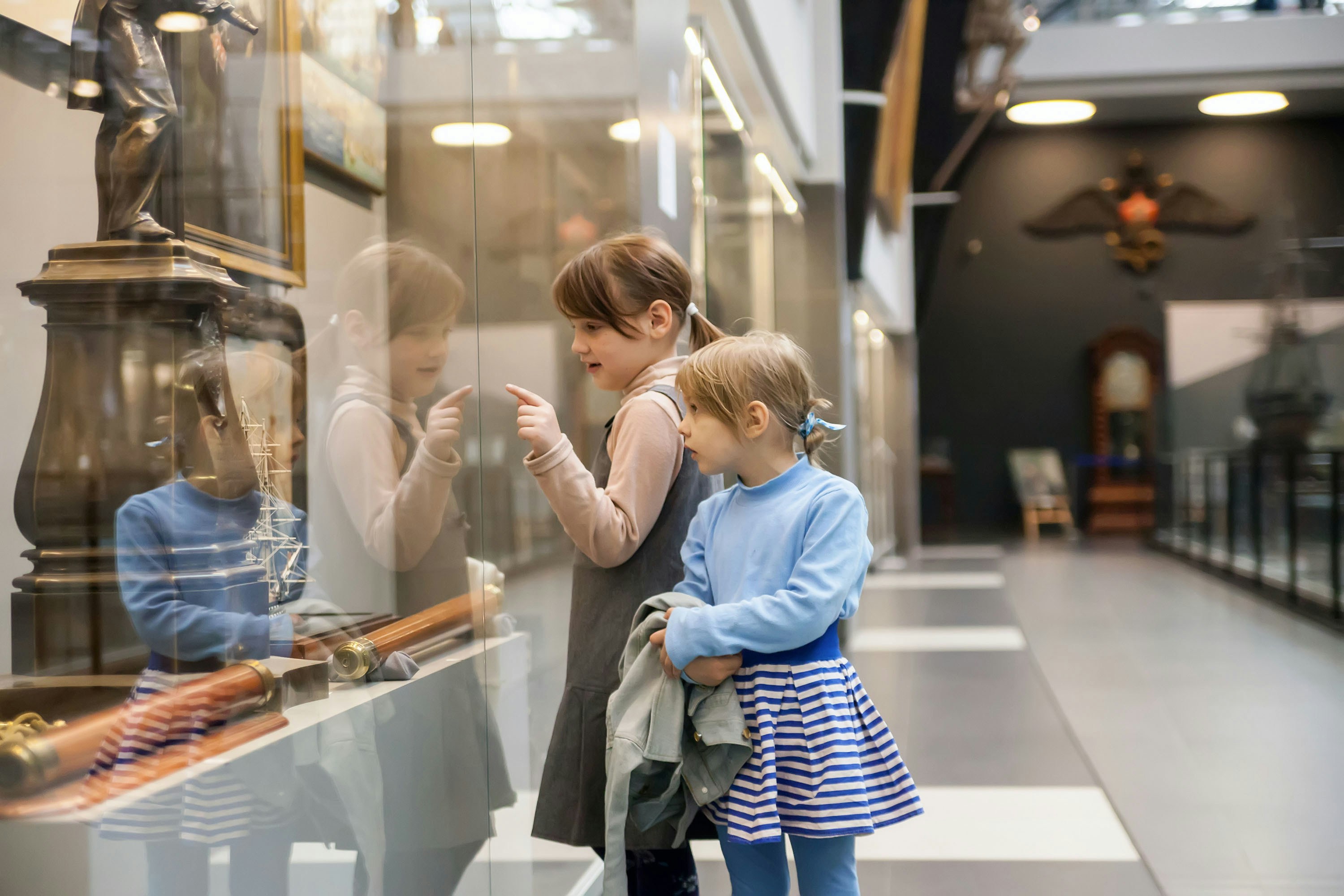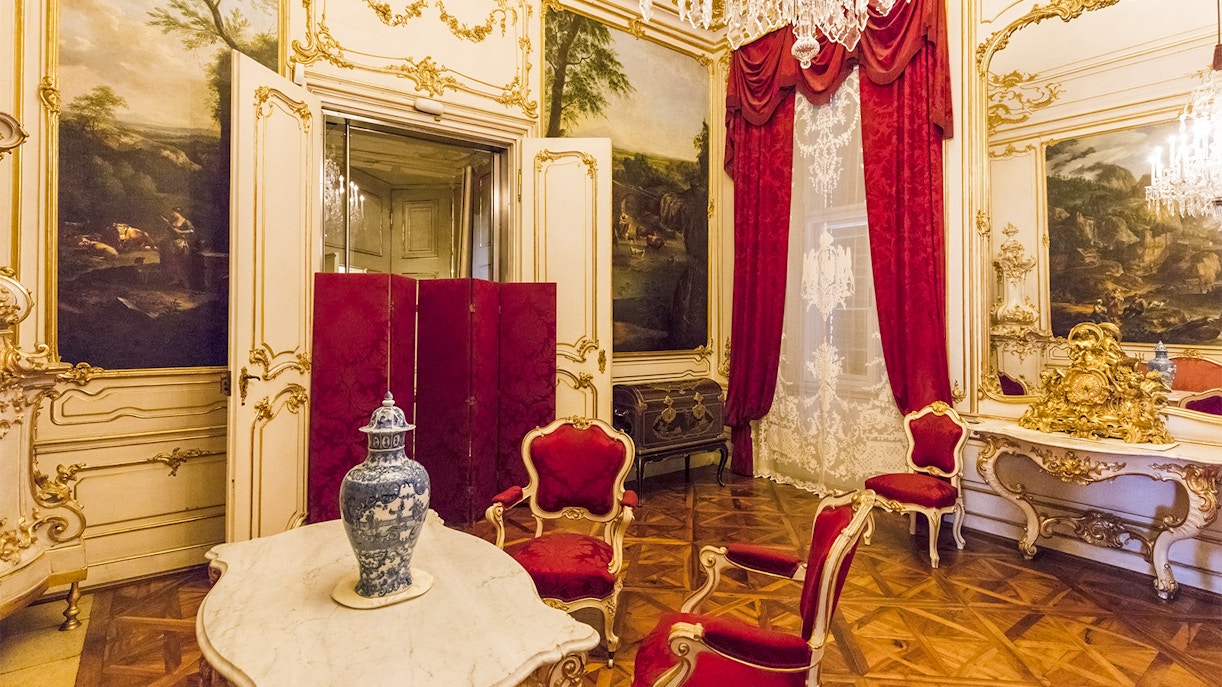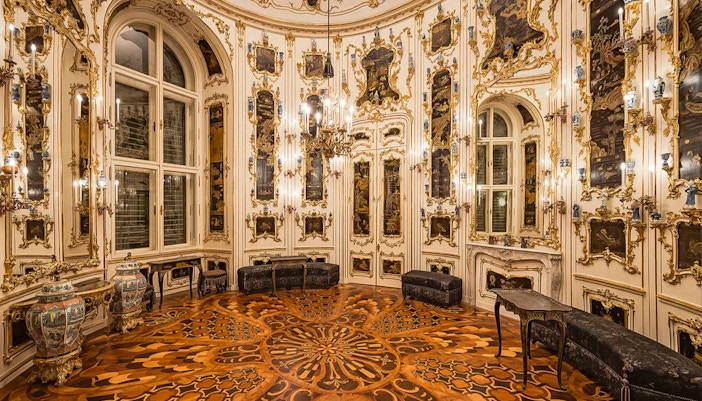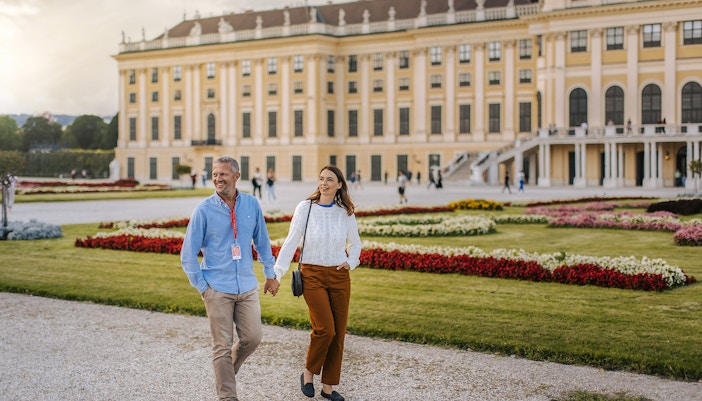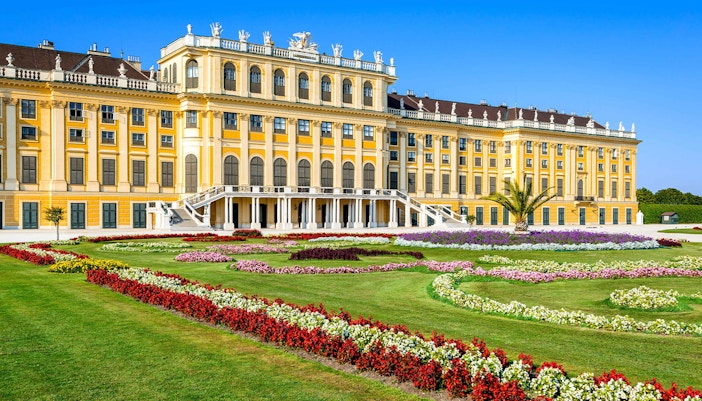- Built: Early 18th century, during the reign of Emperor Charles VI.
- Length: About 40 meters (131 feet), lined with floor-to-ceiling mirrors to create the illusion of endless space.
- Design style: High Baroque, featuring gilded stucco, ornate parquet flooring, and sparkling crystal chandeliers.
- Imperial function: Used for grand receptions, banquets, and political gatherings under the Habsburg dynasty.
- Unique feature: The mirrors directly face the tall windows, amplifying candlelight and making the room glow during evening festivities.
- Today: A highlight of Schönbrunn Palace tours, offering visitors a glimpse into the grandeur of Austria’s imperial past.


